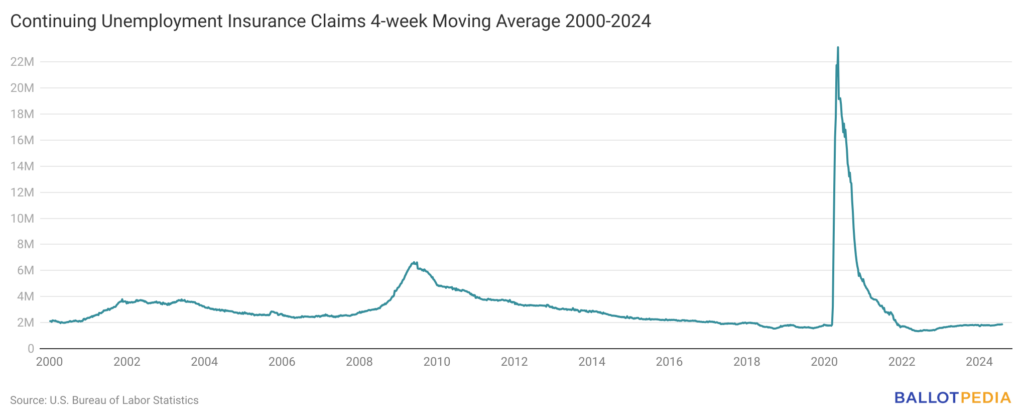New applications for U.S. unemployment insurance benefits fell 2,000 for the week ending Aug. 24 to a seasonally adjusted 231,000. The four-week moving average as of Aug. 24 decreased by 4,750 from the previous week's revised average to 231,500.
The number of continuing unemployment insurance claims, which refers to the number of unemployed workers who are actively receiving unemployment benefits from claims filed at least two weeks before, increased by 13,000 from the previous week's revised number to a seasonally adjusted 1.868 million for the week ending Aug. 17. The 4-week moving average was 1,863,250, a decrease of 250 from the previous week's revised average.

Unemployment insurance is a joint federal and state program that provides temporary monetary benefits to eligible laid-off workers who are actively seeking new employment. Qualifying individuals receive unemployment compensation as a percentage of their lost wages in the form of weekly cash benefits while they search for new employment.
Weekly unemployment claims data serves as an indicator of the overall health of the economy, providing timely insights into labor market conditions. The data's significance lies in its ability to reflect sudden changes in employment trends, often signaling the onset of economic downturns or recoveries before they become apparent in other less frequently released data. A sustained increase in weekly jobless claims may suggest weakening economic conditions and potential contractions, while consistent declines typically indicate a strengthening job market and economic expansion.
The federal government oversees the general administration of state unemployment insurance programs. The states control the specific features of their unemployment insurance programs, such as eligibility requirements and length of benefits.
For information about unemployment insurance programs across the country, click here.
Additional reading:


